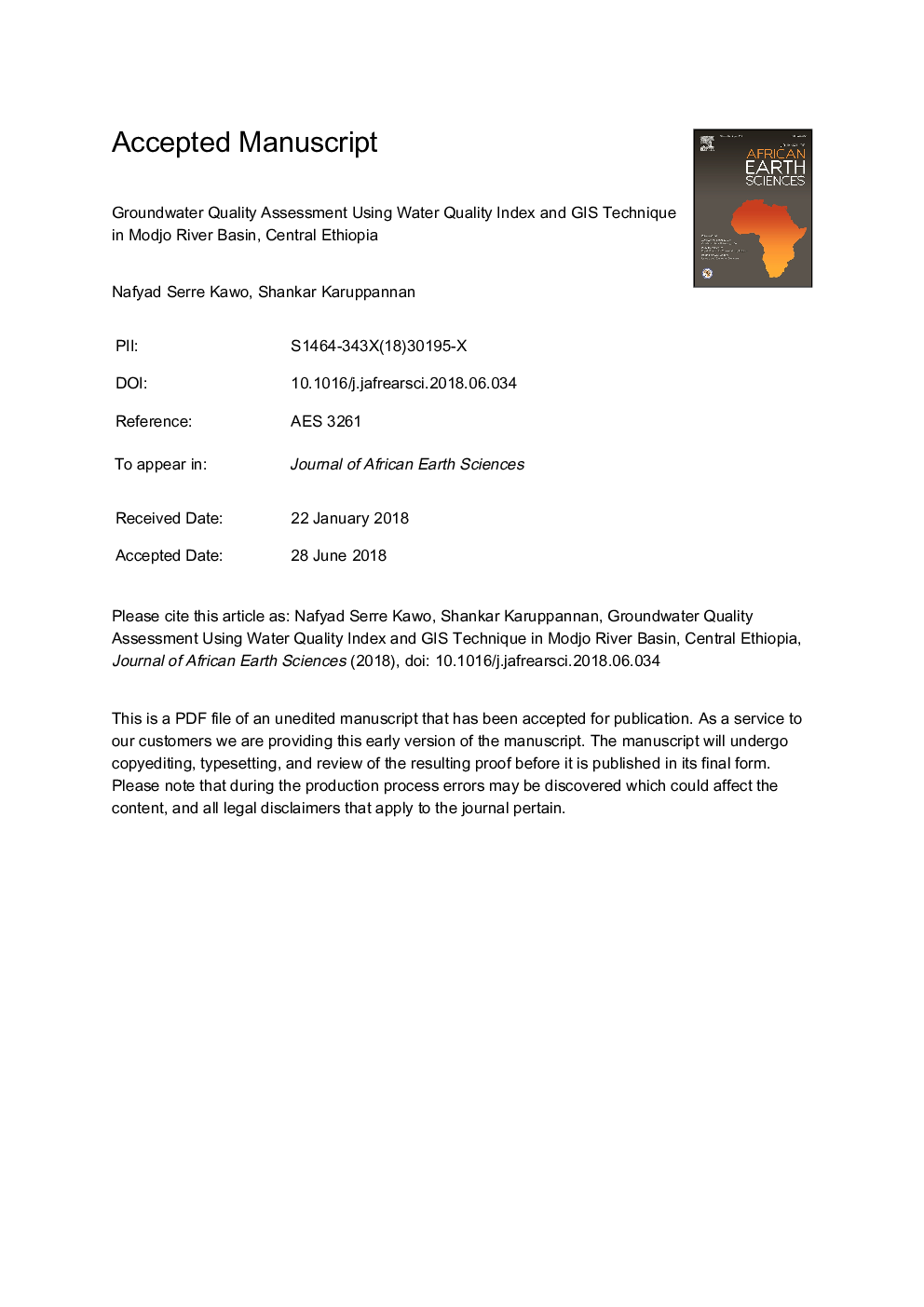| Article ID | Journal | Published Year | Pages | File Type |
|---|---|---|---|---|
| 8913354 | Journal of African Earth Sciences | 2018 | 44 Pages |
Abstract
Groundwater is main sources of water supply in Modjo River Basin. In this study, 31 groundwater samples were collected and analyzed to determine suitability of groundwater for drinking and irrigation uses. Spatial variation map of major cations (Ca2+, Mg2+, Na+, K +) and anions (HCO3â, NO3â, SO42â, Fâ, Clâ) were produced using IDW interpolation in GIS. Piper pilot show that, Ca-Na-HCO3, Na-Ca-HCO3 (mixed) and Na-HCO3 water types are found in study area. Ca2+ and Mg2+ are dominant in highland aquifer whereas Na+ is dominant in rift valley aquifer. HCO3â is the dominant anion in all samples. Rock-water interaction and cation exchange along groundwater flow path are responsible for the current characteristics of hydrogeochemical facies. Water quality index using quality rating scale to evaluate the suitability of water for drinking purpose shows that 3.23% and 93.54% of groundwater samples fall within excellent and good water quality, respectively. On the other hand 3.23% of groundwater samples fall within poor water quality. From the computation of SAR values it was found that 97% of groundwater samples are in suitable class and the remaining 3% constituting doubtful class for irrigation use. RSC value shows that, 9.67% of groundwater samples fall in good categories for irrigation use. Whereas, 41.93% samples falls in doubtful and 48.38% samples falls in unsuitable categories for irrigation use. In general, geogenic process and anthropogenic activities such as urban sewages and fertilizers are factors governing groundwater chemistry of study area.
Related Topics
Physical Sciences and Engineering
Earth and Planetary Sciences
Geology
Authors
Nafyad Serre Kawo, Shankar Karuppannan,
